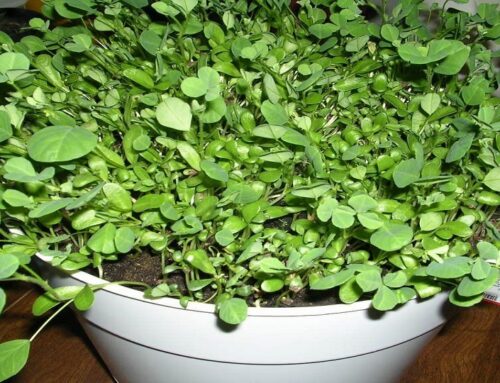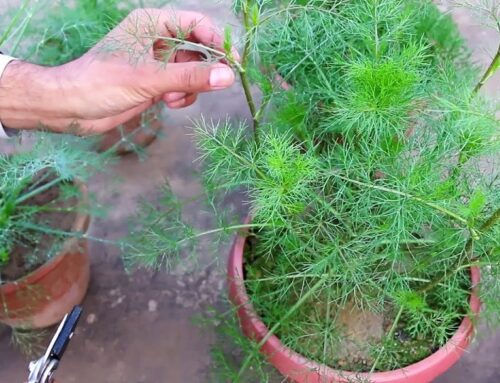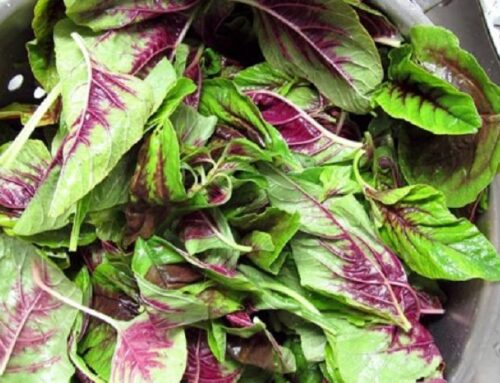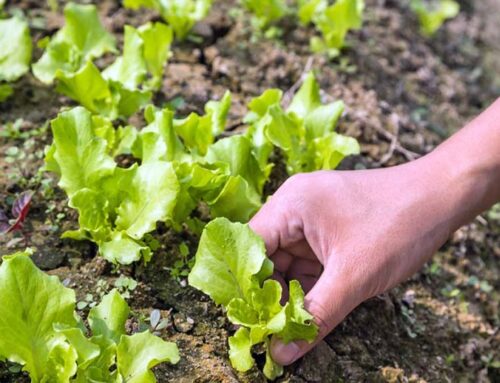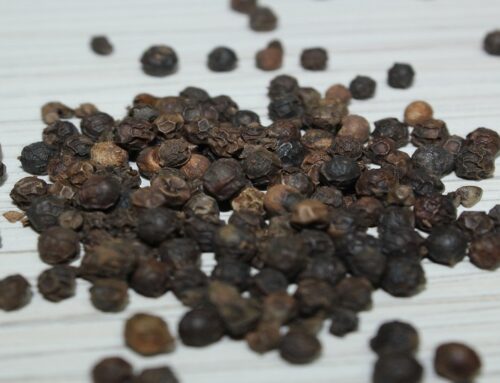Patchouli can be grown as a plantation crop as well as an intercrop in plantations. It is a good intercrop in mango orchards, coconut plantations, and other fruit trees such as custard apple. A detailed description of commercial growing practices for patchouli herb is given below:
The first step in growing patchouli is to choose a suitable site where plenty of sunlight is available for healthy growth of the plants.
Patchouli grows well under open field conditions where plants are partially shaded by shade-providing trees. A site free of weeds, water-logging, and soil erosion is the most ideal requirement for growing patchouli on a commercial scale. Soil should be highly fertile and rich in organic matter. Site should also be free of nematode infestation as patchouli plants are susceptible to nematode attack.
Total available area in the site needs to be divided into three major areas – nursery bed, cultivation area and drying area. Nursery bed and drying area may be established in the northern corner of the main cultivation area as maximum shade is available in this location. Main cultivation area is an open field which needs to be well-prepared before planting process.
Patchouli herb grows well up to an altitude of 800-1000 meters above MSL (mean sea level). Ideal rainfall requirement is ranging from 150-300 cm per annum. Patchouli crop prefers an even distribution of rainfall throughout its growth.
Most ideal temperature range is between 25°and 35°C. Ideal atmospheric humidity requirement is about 80-90 percent. In general, patchouli herb prefers a warm and humid climate or tropical to subtropical climate with plenty of sunlight.
Patchouli herb prefers well-drained, fertile, deep loam to sandy loam soil which is neutral to slightly acidic in nature. Ideal pH is between 5.5 and 6.5. Water logged soils must be avoided because they are susceptible to nematode attack.
Patchouli crop can be grown in alkaline soils also provided that the soil is treated with gypsum@10-15 tons per hectare to modify soil pH.
Patchouli is a shade-loving plant and loves filtered sunlight. Therefore direct sunlight should be avoided. This can be done by planting shade-providing trees on the site before establishing a patchouli plantation.
Patchouli grows well under partial shade. Complete shade is not desirable for its growth.
Propagation in patchouli can be done either through rooted stem cuttings or through rooted and hardened tissue culture plants. Generally, rooted stem cuttings are preferred as they are cheaper than tissue cultured planting materials. Opting for tissue cultured planting materials increases initial investment even though tissue cultured plants produce more biomass than that of plants raised through stem cuttings.
Stem cuttings are raised in a well-prepared nursery bed. Tissue culture seedlings are produced in a tissue culture lab.
Since patchouli is a shade-loving plant, nursery bed needs to be raised in a shaded location. Well-prepared, infestation-free growing media (i.e. fertile soil or soil and organic manure mixture) should be used in the nursery beds. Generally, a nursery bed of 200 square meter size is sufficient to raise planting materials for planting one hectare area.
10-15 cm long stem cuttings from healthy branches are prepared to plant in the nursery beds. Each cutting needs to have at least 4-5 plump (healthy) nodes. All leaves are removed except one or two pairs of leaves that are at the top.
Growth stimulators may be applied at the cut ends of the cuttings to improve sprouting percentage. Generally, IBA (indole-3-butyric acid) @1,500–2,000 ppm is used for sprouting enhancement.
Treated stem cuttings should then be planted in nursery beds at a spacing 10 cm × 10 cm. Ideal time for raising a nursery is rainy season. Seed pans or polythene bags containing well-prepared growing media may also be used to raise stem cuttings.
Once cuttings are planted, nursery beds are kept continuously moist by regular watering. Humidity at the root zone is essential for early rooting. Nursery beds are kept moist until the cuttings are ready for transplanting. Under favourable conditions, about 85-90 percent cuttings begin to develop roots within two weeks of planting. Cuttings become ready for transplanting in the field within one to two months.
In case of nursery-raised stem cuttings, 2-month old rooted cuttings are used for transplanting. Rooted cuttings are transplanted in the field in the evenings.
In case of tissue culture seedlings, they need to be adequately hardened before transplanting them in the main field. They can be hardened by gradually exposing them from lab to field by taking appropriate measures. Normally, hardening for a period of one month is sufficient.
Recommended spacing for patchouli plants for different commercial growing practices is as given below:
- 60 cm × 60 cm for rooted stem cuttings for open field cultivation under both drip and conventional irrigation
- 30 cm x 30 cm for tissue culture seedlings for open field cultivation under both drip and conventional irrigation
- 45 cm x 45 cm for intercropping system
In case of rooted stem cuttings, the best time for planting them in the main field is onset of monsoon; i.e. June to September. In case of tissue culture seedlings, any time except very hot and heavy rainy seasons is ideal.
Planting materials (either rooted stem cuttings or hardened tissue culture seedlings) are planted directly on ridges that are prepared in the main field at a planting depth of approximately one centimeter.
Field or main site of planting should be well-prepared well ahead of planting process. This may be done by 3-4 ploughings followed by leveling of the land. Top soil should be mixed with 10 to 20 tonnes of FYM (farm yard manure) or compost during last ploughing to enhance top soil fertility. The field, then, is laid out into ridges or beds.
Ridges or raised beds of convenient size are prepared. Generally, ridges (beds) of having 20-25 cm height and 15-20 cm width with a spacing of 60 cm between the rows are recommended. However, a grower should always follow his/her discretion while preparing land and ridges, based on his/her convenience, land and soil characteristics, availability of natural resources etc. The ridges or beds need to be irrigated a day before the transplanting process.
Since nematode attack is a serious problem in growing patchouli in certain regions, application of neem cake or pongamia cake or any other locally available organic nematicide @ 0.5 tons per acre is recommended at the time of land preparation. Another practice to prevent nematode infestation in the soils is to grow nematode-repellent crops such as periwinkle along the borders of the ridges.
In regions where soil fertility is poor, basal application of 8, 20 and 20 kg of N, P and K per acre is also recommended during field preparation.
Patchouli is a heavy feeder and hence fertilizer requirement is heavy. Fertilizer and manure application needs to be scheduled after proper soil testing procedures to determine soil fertility status. Patchouli is a heavy feeder of nitrogenous fertilizer and hence nitrogenous fertilizers needs to be applied in liberal quantities.
For 3-4 harvests a year, the plant has to be fed with 150:100:100 Kg of NPK (N for Nitrogen, P for Phosphorus and K for Potash) per hectare. Full P and K and 1/4 N is applied as a basal dose along with organic manures at the time of land preparation. Rest of the Nitrogen is applied in 3 equal splits after each harvest if three harvests are taken in a year. Sometimes, foliar spraying of urea (0.2%) is recommended as an additional dose.
Foliar application of micronutrients is recommended in case the plantation is susceptible to chlorosis and browning.
In soils deficient in trace elements such as zinc and manganese, application of zinc sulphate@20 kg/acre and manganese sulphate@10 kg/acre is recommended.
In advanced, intensive growing systems by using drip irrigation or other advanced technologies such as hydroponics, higher doses (generally 1.5 times) of manures and fertilizers are recommended as bio mass production is more under such intensive growing systems.
Patchouli is a moisture-loving plant and irrigation is an important practice in growing patchouli plants. Field beds (ridges) are irrigated one day before transplanting process. Thereafter, a light irrigation is done soon after transplanting process.
Patchouli plants need shade and sufficient moisture during initial stages of its growth to get established in the field. Generally, daily watering is recommended for the first week after transplanting and thereafter watering may be done every alternate day for the next two weeks or till the time plants are established.
While watering patchouli plants, care needs to be taken to avoid overwatering as patchouli plants are susceptible to waterlogging. Waterlogged soils may invite nematode infestation also.
Once plants are established in the soil, irrigation may be scheduled depending upon water holding capacity of the soil and climatic conditions.
Patchouli can be grown either by using conventional irrigation methods such as flood irrigation or by using drip irrigation. Frequency of flood irrigation may be scheduled as twice a week and that of drip irrigation as 30 minutes per day. In drip irrigation, fertilizers may be applied through irrigated water (i.e. fertigation may be practiced).
During summers, plants need more water and therefore frequency of irrigation needs to be doubled. During monsoon season, irrigation is not required.
Once plants get established in the field, nipping of apical buds is done at monthly intervals in order to promote branching and vigorous lateral growth of the plant.
Patchouli is susceptible to leaf blight disease, a fungal infection caused by Cercospora species and rhizoctonia wilt, a fungal infection caused by Rhizoctonia species. In leaf blight disease, main symptoms include appearance of brown spots near leaf margins of almost one year old plants. The affected leaves dry up gradually. In rhizoctonia wilt, the affected plants wilt and gradually die. Application of recommended fungicides is the best control measure that can be adopted by a grower in both cases.
Patchouli crop is susceptible to root-knot nematode (Meloidogyne incognita) infestation. Main symptoms include wilting of the plants, stunted plant growth and presence of galls in the roots. Pre-planting treatment of planting materials with organic nematicides such as neem cake or pongamia cake is recommended as a control measure. Using a healthy mother stock to raise cuttings under nematode-free conditions also eliminates the chances of nematode infestation. Other nematode control measures include sterilization of nursery beds, growing periwinkle, a nematode-repellent crop as an intercrop, and use of recommended nematicides. In organic cultivation practices, biofertilizer containing Trichoderma spp. may be applied in large quantities at the time of land preparation to counteract the effect of nematode attack.
Apart from nematodes, aphids and caterpillars may also become serious problems in a patchouli plantation. These problems can be controlled by using any of the recommended pesticides.
During initial two to three months of plant growth, the field needs to be kept weed-free by manual weeding. Hoeing is also recommended during initial stages of plant growth. During hoeing operation, care needs to be taken not to disturb the root system of growing plants. In an established plantation, weeding and hoeing is recommended after each harvest.
It may take about 6 to 9 months after planting for a patchouli plantation to come to maturity for harvesting.
When the lower leaves of the plant turn brown in colour, it is time to harvest the leaves. Since the highest quality oil is obtained from new emerging shoots, these top pairs of leaves are harvested from the top. Normally, leaves and tops are harvested at 6 to 8 nodes or 10–25 cm below the apex point. If harvesting is done further below this point, subsequent yields will be less. Harvesting is done during late morning hours by using a sharp knife.
In case of rooted stem cuttings, first harvest is possible after six months of planting; that is, when the plants are about one meter tall. In case of tissue culture plants, plant maturity is quick and first harvest is done three months after planting. Subsequent harvests in both cases may be possible at an interval of 3-4 months, depending upon the soil fertility status, prevailing climate and cultural management practices. A patchouli plantation yields quality produce up to 3 years.
Under flood irrigation, approximately 10 tonnes of fresh leaves is obtained from one acre area per annum in 3 harvests. That is, approximately 3 to 3.5 tons of fresh leaves per harvest are obtained.
Under drip system of irrigation, approximately 20 tons of fresh leaves are obtained from one acre area per annum in 3 harvests. That is, approximately 5 to 7 tons of fresh leaves are obtained per harvest.
While growing patchouli as an intercrop, a yield of about 2 tons of biomass is obtained per acre per year.
We have a book on ‘Patchouli Herb‘….
Check out our publishing services here…
We publish top quality videos on various ‘Food & Agriculture’ topics. You may subscribe our video channel here…


